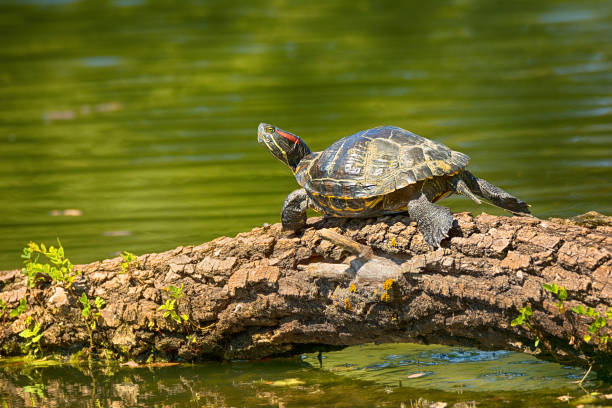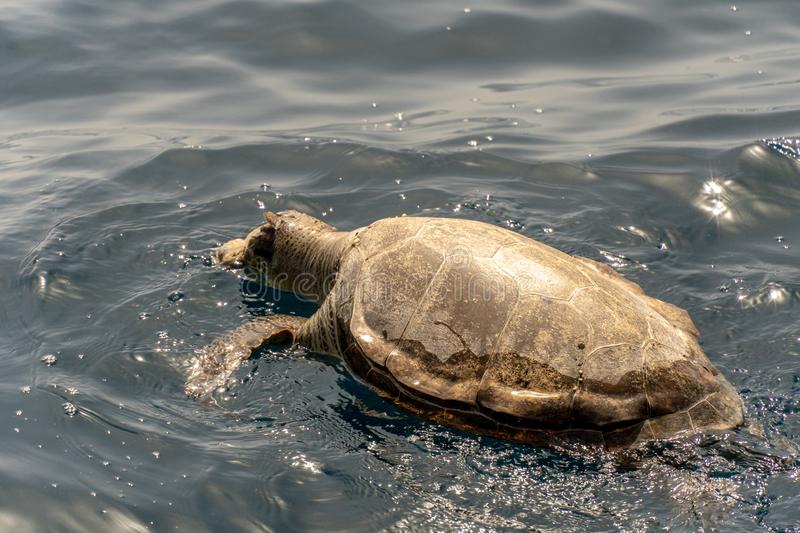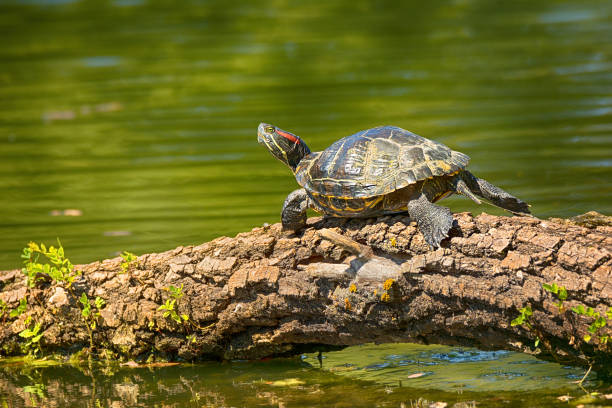How Long Should Turtles Bask in the Sun .Turtles are ectothermic, which means they rely on external sources of heat to warm their bodies and regulate their metabolism. One of the ways turtles absorb heat is by basking in the sun. But how long should turtles bask in the sun?
There is no one answer to this question because it depends on several factors, including the species of turtle, the temperature outside, and the turtle’s overall health. In general, however, most turtles need to bask for at least a few hours every day to stay healthy.
Turtles are reptiles that need to bask in the sun to regulate their body temperature. But how long should turtles stay in the sun?
The answer depends on the species of turtle and the temperature outside.
Some turtles can tolerate higher temperatures than others. For example, desert tortoises can withstand very hot temperatures, while box turtles do best in moderate climates.
In general, most turtles should be fine if they spend a few hours basking in the sun each day.
However, if it’s extremely hot outside, it’s important to make sure your turtle has access to shade and plenty of water so it doesn’t overheat.
If you’re not sure how long your turtle can stay in the sun, it’s best to err on the side of caution and provide some shade and water just in case. Your turtle will thank you for it!

How Long Should Baby Turtles Bask in the Sun
Most baby turtles bask in the sun for about 2 to 3 hours a day. However, this can vary depending on the type of turtle and the temperature outside. For example, if it’s very hot outside, your turtle may only want to bask for an hour or so.
If it’s cooler, they may want to bask for longer.
How Long Can a Turtle Go Without Basking
Turtles are ectothermic, meaning they rely on external sources of heat to regulate their body temperature. So basking is essential for turtles! But how long can a turtle go without basking?
It depends on the species of turtle and the temperature of their environment. Some turtles can tolerate cooler temperatures and can go without basking for a few days or even weeks. But others need warm temperatures to stay active and healthy, so they may only be able to go a day or two without basking.
If you have a turtle as a pet, it’s important to provide them with a warm basking area where they can soak up some sun (or heat lamps) every day. If your turtle starts acting sluggish or stops eating, that’s usually a sign that they’re not getting enough heat and need to bask more often.
Why Do Turtles Bask in the Sun
As the weather gets warmer, you may see turtles basking in the sun more often. Turtles are ectotherms, meaning that their internal temperature is regulated by their environment. When it’s cold outside, turtles will bask in the sun to warm up.
When it’s hot out, they’ll seek shade to cool down.
There are several reasons why turtles bask in the sun. The first is that it helps them regulate their body temperature.
By basking in the sun, they can raise their internal temperature when they’re too cold or lower it when they’re too hot.
Another reason turtles bask is because it helps them absorb vitamin D from the UV rays of the sun. Vitamin D is important for many things, including bone health and immune function.
Without enough vitamin D, turtles can develop medical problems like metabolic bone disease.
Lastly, basking is a way for turtles to socialize with other members of their species.
Turtle Left in Sun Too Long
If you’re like most people, you probably think of turtles as slow, lumbering creatures. But did you know that some turtles can actually move quite quickly when they need to? And did you also know that turtles can get sunburned?
Yes, it’s true! Just like our skin, the skin of a turtle is susceptible to damage from the sun’s ultraviolet (UV) rays.
That’s why it’s important to never leave a turtle in the sun for too long.
If a turtle is exposed to direct sunlight for extended periods of time, its skin can become dry and cracked, and eventually lead to painful blisters and ulcers. In severe cases, this can even lead to shell rot. So if you see a turtle out in the sun, be sure to give it a little shade.
Your turtle friend will thank you for it!

Do Turtles Need Direct Sunlight
Turtles are reptiles that are closely related to snakes, lizards, and crocodiles. Unlike these other reptiles, turtles have a hard shell that protects them from predators and the environment. Turtles can range in size from a few inches to several feet long.
They live on every continent except Antarctica. Most turtles spend the majority of their time in water where they are well-camouflaged from predators. However, they must come ashore to bask in the sun in order to regulate their body temperature.
Without access to direct sunlight, turtles will become sluggish and eventually die. If you have a pet turtle, it is important to provide it with a basking area that receives plenty of sunlight during the day. An aquarium lamp can also be used to provide your turtle with the heat it needs.
Just be sure not to place the lamp too close to the turtle as this could cause burns.

Credit: www.allturtles.com
How Long Can Turtles Be in the Sun?
Most turtles can be in the sun for about two hours before they need to return to the water. If it is a particularly hot day, they may only be able to stay out for an hour. When turtles are basking, they absorb heat from the sun which helps them regulate their body temperature.
Can a Turtle Bask Too Much?
Yes, a turtle can bask too much. When turtles basking, they absorb heat from the sun and convert it into ultraviolet light (UV) energy. This helps them to thermoregulate their bodies and maintain their internal temperature.
However, if a turtle is exposed to too much UV light, it can cause burns on their skin and shell. Additionally, prolonged exposure to UV light can damage a turtle’s eyesight.
How Many Hours of Sunlight Does a Turtle Need?
A turtle’s shell is designed to absorb and reflect sunlight. This helps the turtle regulate its body temperature and stay warm. Most turtles need at least four hours of direct sunlight each day to stay healthy.
If a turtle does not have access to enough sunlight, it can become sick or even die.
Do Turtles Like Basking in the Sun?
Turtles are basking reptiles that love to sun themselves on rocks or logs. In the wild, turtles will often bask for hours at a time, soaking up as much of the warm rays as possible. While all turtles enjoy basking to some degree, different species have different preferences.
Some turtles, like the red-eared slider, prefer shallower water so they can easily climb out and bask. Other turtles, like the loggerhead sea turtle, spend most of their time in deeper water but will still come ashore to bask on occasion.
Basking is not only enjoyable for turtles but it’s also essential for their health.
Turtles absorb vitamin D through their skin which helps them calcium absorption and prevents metabolic bone disease. Basking also helps regulate a turtle’s body temperature – something that’s especially important for cold-blooded reptiles.
Turtles Basking Outside | natural sunlight is the best!
Conclusion
Turtles are reptiles that love basking in the sun. They will often bask for hours at a time, and it is one of their favorite activities. While there is no set amount of time that turtles should bask in the sun, it is generally recommended that they do so for at least 30 minutes each day.
This helps them to stay healthy and active, and also allows them to regulate their body temperature.






Leave a Reply